Kreta - Κρήτη
- Jacek Drabik & Luka Vivas Nikonorow

- Aug 6, 2023
- 11 min read
Updated: Apr 9, 2025

Patavii, Ex Typographia Seminarij. Anno 1694.
Miejsce pełne pamięci
Wyspa przywitała nas łagodnie lekkim deszczem. Była to podpowiedź, że jesteśmy w miejscu doznań podstawowych: światła, powietrza, przestrzeni, wody i ziemi. Każdy kolejny dzień to potwierdzał. Zaczęło się od przejażdżki rowerowej w głąb wyspy. Krajobraz intensywnie nasycony. Nie ma po prostu gór. Są wciąż różne góry: strome, łagodne ze stokami, wielokolorowe, monochromatycznie szare, z płatami sadów oliwnych i nagie. Bardzo silnie odczuwa się tę fizyczną moc otoczenia.
Exiting the airport in Heraklion and finding our bus to the hotel was the only chaos we faced on our journey within Crete. This was also the only overcast day we met in Crete, and we embraced the sun and clear skies that followed with immense gratitude.
Spinalonga
Wyspa-twierdza na zatoce Mirambello, ufortyfikowana przez Wenecjan w XVI wieku. Mury z bastionami zupełnie zawładnęły wyspą. Zaciera się granica skał naturalnych i kamiennych obwarowań. Powstał twór spajający naturę z substancją budowlaną. Ta niezwykłość materialna jest w opowieści przewodników pomijana. Skupiają się oni na dramacie ludzkim związanym z utworzeniem na wyspie rygorystycznego azylu dla trędowatych, który istniał do połowy XX wieku, pozostając do dziś greckim wstydem. Spinalonga znaczy „długi cierń”.
It’s an island with a cruel past, yet everything that has remained, is beautiful. Spinalonga was small but mighty. Layers of stone walls and fortifications testify to its important role in defending the Venetians who lived on Crete. In turn what’s left of the small houses on the island serves as a reminder of a more recent history of the leper colony. The island has changed many times under the hands of many people; the ever-changing aquamarine water of the Mediterranean Sea that surrounds it, reminds you of that complex history.
Agios Nikolaos
Niewielkie nadmorskie miasteczko wypełnione turystami. Ma swoją kolorową klęskę. W jego centrum było małe, słodkowodne jezioro o dużej głębokości. Rzadkość na Krecie. Został przekopany kanał do bliskiego w tym miejscu morza. Teraz zbiornik, już słony, jest otoczony ofertą dla gości: hotelami, restauracjami, kawiarniami. Lecz można na tym nadbrzeżu spotkać swoją radość: kaczki młode i dorosłe, które żyją w przyjaźni z ludźmi. Panoszą się pogodnie. Wylegują nonszalancko. Skubią palce zainteresowanych. Do tych kaczek i smaku cytryn zerwanych pokątnie na stromej uliczce chciałbym wrócić.
Agios Nikolaos, my favorite location we visited in Crete, doesn’t complicate life for itself. The inhabitants have the clear priority to enjoy life. While tourists meander and explore, the people of the town maintain their daily routines punctuated by a “freddo espresso keto” or a swim at the small beaches. The town feels real and authentic, centered around its very human mistake: connecting the beautiful freshwater lake to the ocean. It’s a genuine location that appreciates its own style of living and finds no reason to hide its mistakes. We enjoyed a lemon fresh from a tree on the steps of an alley, relishing the calm. In that brief window of time, we were natives of Agios Nikolaos.
Gaje oliwne
Tłocznia oliwy, którą odwiedziliśmy, należy do rodziny Vassilakis, od pokoleń budującej pozycję lidera producentów oliwy na Krecie. Wizyta ważna, bo dotyka świętości drzewa oliwnego. Jest ono wszechobecne w krajobrazie – łagodzi skalistość, przywołuje barwy zieleni, ocienia. Karmi się rozkruszoną skałą. Jest prawie wieczne, bo jego patriarchowie mają ponad trzy tysiące lat. Drzewo oliwne jest także stale obecne w opisie, kuchni, tradycji, mitach. Dar specjalny, bo Grecy otrzymali je z rąk bogów.
Olive oil is the blood running through the veins of Crete. In the arid, rocky terrain of the island, the only vegetation in abundance is the olive tree. A visit to the Vassilakis Estate highlighted how early on the olive oil was perfected by the Greeks. The techniques and equipment we saw were slightly evolved, but not dramatically different from the ancient times. One takes away the respect the Cretans have for the trees, the olives, and the process used to create thick treasure that provides their livelihood.

Fajstos - pałac i miasto minojskie
Spotkanie z przeszłością sprzed 4000 lat. Jest ona zapisana w porządku urbanistycznym i architektonicznym, w licznych zdobieniach, w kulturze materialnej przedmiotów obrzędowych, paradnych i codziennych. To cud wielokrotny: że to zostało wówczas stworzone, że przetrwało, że zostało odnalezione i na nowo odkryte. Możemy iść brukiem ulic Minojczyków, wchodzić po ich schodach, dotykać ścian przez nich wzniesionych. Pałac wybudowany na wysokim stoku ma wspaniałą perspektywę wielkiej równiny i potężnych gór. Jestem przekonany: Minojczycy dlatego właśnie wybrali to miejsce.
Phaistos invites flights of imagination. Tales and history offer fragments of knowledge about a massive palace, of multiple stories and hundreds of rooms, that was the heart of the province in which it resided. What remains is the blueprint for the incredible architectural feat which once stood here. The impressive palace is gone, but even as the tombstone, it shows the mark of its former grandeur.
Agia Triada
Poniżej pałacu Fajstos, ruiny Małego Pałacu, letniej willi królewskiej. Znów zbocze, piękny widok i fragmenty pierwotnej drogi. Wspólnej ich i naszej.
Hidden in plain sight, one could almost mistake its location for a small pine forest. The ‘small’ palace served more as a summer community. The remains of the bazaar that once existed, the irrigation, and storage room for goods declare life was in full swing on these grounds. Walking around the hidden area is almost sacrilegious; not haggling for a loaf of bread or bartering for sheep feels irrational in Agia Triada.
Gortyna & Vori
Gortyna jest to miejsce gęste od pamięci: siedlisko neolityczne; osada minojska; uformowane głazy pokryte zapisem doryckiego kodeksu karnego; rzymski amfiteatr i termy; bizantyjska bazylika Agios Titos… Tutaj też była stolica rzymskiej Krety. Zachowany platan był świadkiem miłości Zeusa i Europy. W murach monumentalnej bazyliki, w osi absydy, rośnie samotny cyprys. Do niego chciałbym wrócić.
Vori, mała wioska nieopodal Gortyny, szczęśliwie zachowała swój kształt w tradycyjnym planie. Krótki odpoczynek w cieniu pergoli Tawerny Alekos. Obrus w czerwono-białą kratkę, skupiony gospodarz, ślicznie zadbany zielony mały dziedziniec. Tutaj też chcę wrócić.
The well-preserved Gortyn Code stood strong and imposing, as one would expect from the oldest known Greek code of law. Gortyna was one of the most powerful towns in ancient Crete; what remains clear of its legacy is the value of the arts with its amphitheater and imposing basilica. While at the site of Gortyna, we befriended a clever dog, who took us around the small remnants of the town in return for a few belly rubs.
On the Southern side of Crete lays the village of Vori, small and beautiful. We walked around admiring the calm of the place, stopping by here and there to point out the architecture details or to listen to a dog barking us off its property.

Santorini, Oia, Fira
Wszystko zostało już sfotografowane, sfilmowane, opisane, zachwycone. Wyspa jest zmęczona sławą i turystami. Ale jest to prawdziwy zaułek piękna. Jego skala i magia wynikają z siły żywiołów: ziemi koliście rozbitej wybuchem wulkanu, morza w kolorze zagęszczonego nieba i nieba, w kolorze legendy. Wszystko to obserwowane z oszałamiająco wysokiej widowni zabudowań w jasnych kolorach. Znów symbioza tego, co człowiek i tego, co natura. Kościół prawosławny w Firze: wciąż świętość, ikony, cisza, bracia w ciemnych habitach siedzący w pierwszym rzędzie drewnianych ław.
Dwie perełki z Santorini:
Pierwsza: jesteśmy w tawernie, wysoko, praktycznie na szczycie w Firze. Siedzimy w pierwszej linii stolików na platformie wyniesionej do wysokości głów przechodniów tłoczących się na wąskiej uliczce, tuż za którą jest już urwisko, widok skał, morza i horyzontu. Uliczka jest odgrodzona murem (oczywiście białym) od przepaści. W pewnym momencie mężczyzna, z pary mijającej naszą lożę, schyla się i pokazuje swojej towarzyszce duży, złoty kolczyk podniesiony z chodnika. Para ogląda go z podziwem i odkłada na murek-ochronę. Długo nikt nie zauważa klejnotu. Po pewnym czasie inny mężczyzna zatrzymuje się, bierze kolczyk do ręki, długo ogląda i odkłada na wyższy, bardziej widoczny fragment muru.
Druga: z drogi prowadzącej z miasteczka Oia do portu widać fragment zatoki. Na niej unosi się pierścień połączonych boi pływakowych. Kiedy wracamy, nasza przewodniczka pyta nas, pasażerów autokaru, czy możemy wskazać jakieś uzasadnienie dla tej konstrukcji. Odpowiedzi było kilka, wszystkie racjonalne i prawdopodobne. Wówczas pani przewodnik przyznała, że to jest stały konkurs wytłumaczeń i wskazała swój wybór: to jest przedszkole dla Syrenek. Zgadzam się.
Santorini is the destination everyone knows, when one thinks of Greece. You see pictures from the island on postcards: the small white houses and chapels that line the steep cliffs. We arrived in the port around noon after a 2-hour journey and shuffled out of the boat like a flock of sheep. The clear blue water was exactly as in pictures. It was quite surreal – the number of tourists that had come to the island. We were herded to a bus and driven to the popular city of Oia. On the way it was evident that the naturally sparse conditions of the island were of no concern as many new lavish houses and hotels were being built with pool accommodations. Inching our way through the crowded alleyways of Oia was tricky, but we managed to reach one end of the town and take in the beauty of the surrounding seascape. We made our way soon after to the other big town on the island.
Fira, also composed of a multitude of white houses, shared the incredible view with Oia, but felt more human. We stopped briefly by a chapel, then made our way through the streets looking for a nice place to eat. We found a calm spot, with the extraordinary view and the delicious food. We took our time, taking in the surroundings and chatting. This was my favorite part that day. We stopped being tourists for the moment and were able to better understand life on the island. This is always the hardest part of traveling to famous locations, and in a place like Santorini, it’s almost impossible to break away from the throng of tourists that swallow the place whole. But for that hour I had with Jacek, we were just visitors, almost invisible, appreciating the island’s beauty, its space, and food.
Heraklion & Knossos
Znów podziw i zdumienie wobec wielkości, komplikacji, potrzeby piękna i tajemnic sprzed tysięcy lat. Wprowadzenie światła do sal, przejść, zakamarków. Malowidła – radosne sprawozdanie z urody życia. Zostawiasz z boku wszelkie kontrowersje wokół rekonstrukcji i idziesz Drogą Królewską, wspinasz się na Wielkie Schody, przechodzisz przez Dziedziniec Centralny. Obcujesz z kamieniami celowo ułożonymi przez tych, którzy wtedy tu żyli. Muzeum jest świetne: lekka, pełna światła i powietrza konstrukcja, logiczna i przejrzysta ekspozycja. I poczucie już osobistego rozpoznania, gdy czytasz metryczki z pochodzeniem najcenniejszych eksponatów: fresków Delfinów i Księcia (Knossos), dysku (Fajstos), sarkofagu (Agia Triada).
Wracając do hotelu, przejeżdżamy obok rozległego pola pokrytego regularnie rozmieszczonymi, pionowymi skrzynkami przyłączeń medialnych. Komentarz naszej przewodniczki: „Ponad 10 lat temu rząd obiecał nauczycielom działki i domy.” Dziś pole wygląda jak cmentarz marzeń.
Heraklion was the only place we visited on Crete that felt like a proper city. It reminded me of Amman in Jordan: droves of the white square houses, standard in many very sunny locations. First of all, we went to Knossos and took our time observing the details within the archeological site. Having already seen several Cretan heritage relics, we knew generally what to expect: remnants of grand courtyards, storage rooms and pillars. Knossos was the best preserved of the palaces we visited, with multiple floors still standing and an imposing throne room. With ancient sites, it is challenging for me to understand the timeframe for when exactly these structures were built and rebuilt, after events like wars or earthquakes. However, just a general fact that the multi-storied grand palace such as Knossos was constructed roughly four thousand years ago is mind boggling. It’s easy to scoff at these sites, since so little remains intact. But if you think about everything that has happened between today and the times when they were first built, it is astounding that there is any trace left at all. A vivid testimony to the people, who lived in these locations hundreds or even thousands years ago.
Afterwards we visited the Heraklion Museum where we were able to examine the various artifacts uncovered throughout Crete. I particularly liked the colored glasswork and enormous trays used to serve assorted drinks. We noted several clear connections between the Cretans and Egyptians evident in artwork style and the concept of afterlife as well as in interactions with gods, as suggested through depictions of sacrifice.

Lato
Znajdują się tu pozostałości miasta Dorów: zlokalizowane na szczycie góry, z rozległym widokiem na zatokę i sąsiednie masywy skalne. Położenie, samotność i naturalne zespolenie ze światem natury uwzniośla to miejsce. Odczuwany majestat podkreślają okrzyki szybujących orłów.
Krista, duża wioska nieopodal, zachowała stary układ uliczek i dawne budynki. Starszy mężczyzna, siedzący tuż przy drodze w cieniu drewnianego daszka, uśmiecha się. Podnosi rękę w pozdrowieniu.
Lato was the archaeological site that impressed me the most. It seemed like the Cretans’ first attempt at concision: confined to the top of a mountain, could they fit the multitude of necessities that we had seen before at other, more extensive places. The short answer is, yes. One thing that struck me was the steep street dividing the town in half. It was hard to imagine that it had once served as a passageway for heavy goods and materials. There was also a tremendous basin to store water at the mountain top, lined with clay, so as to prevent leaks and fully contain the water. Lato, with its tight passages and small size compared with Knossos or Phaistos, was more of a community. I had a feeling that everyone thrived while living here.
On our way back, descending the mountain, we walked by the various shops on the main street of Krista. In the once-pottery shop we found a stone dish with decorations on the surrounding lip. The dish seemed like a memento for the whole of Lato. Everything was built not only properly, but with the extra care and tenderness. It is no wonder the structures have lasted for so long.
Malia
Pałac i osada minojska nad morzem. Nie ma tutaj dramatycznych dekoracji gór. Powściągliwość i dyscyplina prac archeologicznych zachowuje autentyzm założeń oryginalnych. Miłe poczucie satysfakcji: po poprzednich spotkaniach z przeszłością, rozpoznajesz już pewne cechy wspólne lub podobne założeń minojskich. Stąd waśnie pochodzi złoty wisior z dwoma pszczołami podtrzymującymi okruch miodu, który znasz z muzeum w Heraklionie.
W drodze do Mali – dwie dzikie kozy stojące na prawie pionowej ścianie wbrew prawu grawitacji. W drodze do hotelu – blaszane wywietrzniki na dachach budynków, z reguły czarne, z ptasią sylwetką.
We came to Mali by day and meandered around the old town in search of ice cream. Some people road by on mopeds, the popular means of transport across Crete. We found a nice bakery on the main road and sat down to rest. Jacek ate half of a loaf of bread, diligently avoiding the inner part and sticking to the crust, while I enjoyed a strawberry sorbet. We observed people passing by and soon left, leaving Mali as tranquil as we had first found it.
Jaskinia Agia Paraskevi
Pojechaliśmy do niej rowerami. Było gorąco i pod górę. Zmęczenie, fizyczny wysiłek przybliżyły nas do surowej pierwotności miejsca. Chłód, wilgoć, mrok, strome zejście w głąb: do świata narodzin, wspólnoty, lęku, kultu. Pierwsze odkryte ślady obecności człowieka nauka datuje na okres neolitu. Potem potwierdza erę minojską i rzymską. Obecnie wciąż czci się tutaj pamięć świętej Paraskevi. Silne poczucie naturalności, biologicznego wręcz związku pomiędzy materią, jej trzewiami i człowiekiem, który się chroni, bytuje i zaklina świat. Nabierasz pewności, że tu są źródła jedynej prawdziwej opowieści o tym, jak było i jak się rzeczy mają.
Wyspa Dia: widzieliśmy ją codziennie. Chroni port Heraklionu przed wiatrami. Rozciągnięty kamienny jaszczur-smok przy północnym brzegu Krety. Tak, skamieniał z woli Zeusa.
The day of the Paraskevi Cave was possibly my favorite. We ventured in search of the cave after having seen a road sign indicating that it was roughly 5 km away. We rented bicycles and set off under the scorching sun. The roads are well paved, fun to ride. The hills of Crete mean either peddling arduously up or gleefully flying down a slope. With no internet connection, we relied on a general understanding of directions and road signs. We found ourselves lost at one point and continued half-blind. We were both under the impression that the cave would be tucked in the middle of a valley. We gave our last bit of energy to reach the top of a hill. And here was the magical place! I used what little strength I still had at this point to gasp. The cave was an immediate change of scenery from the arid sunny climate we had just cycled through. It was also a major pigeon sanctuary; pigeons would constantly be flying in and out of the cave. Jacek checked his watch and said the time was 17:30, almost six hours since the beginning of our ride. We were worried that we would miss out on dinner. However, by some miracle, our descent was super fast, around 45 minutes! We dashed into the sea for a much-earned bath and then devoured our food. It was a beautiful ending to an adventurous day.
Czerwiec, 2023


Jacek Drabik, historyk sztuki z wyksztalcenia, artysta z temperamentu,
menadżer projektów urbanistycznych z praktyki życia. Warszawiak.

Luka Vivas Nikonorow is a 19 year old New Yorker, currently a student at Bard College.















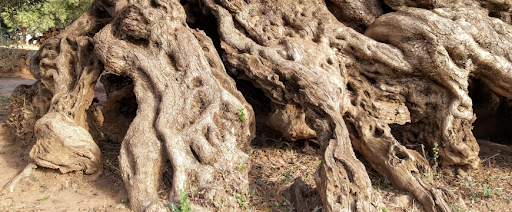

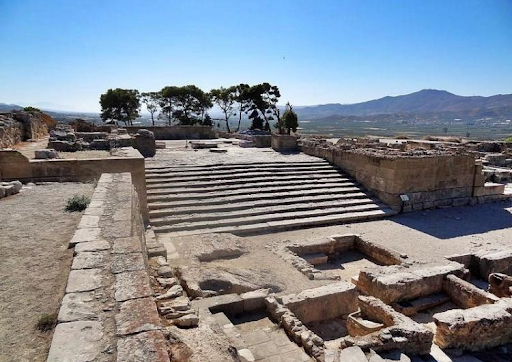



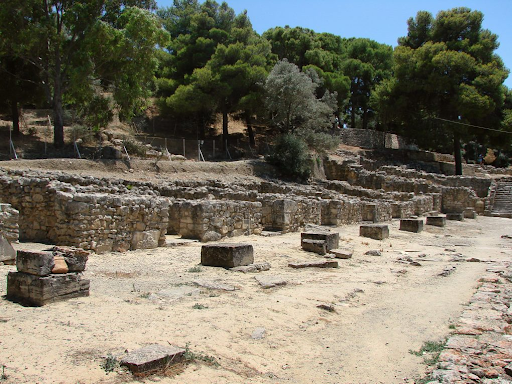




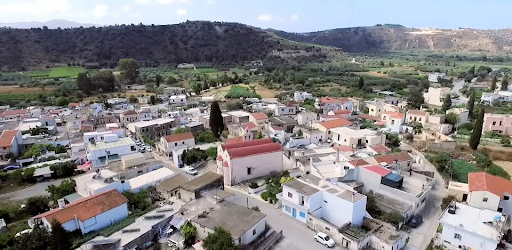















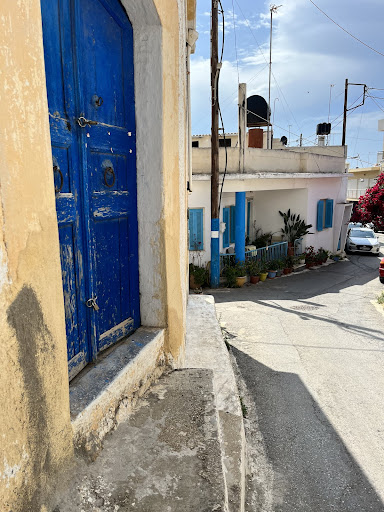

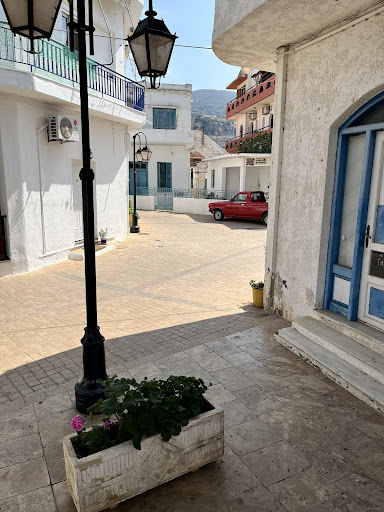



Comments